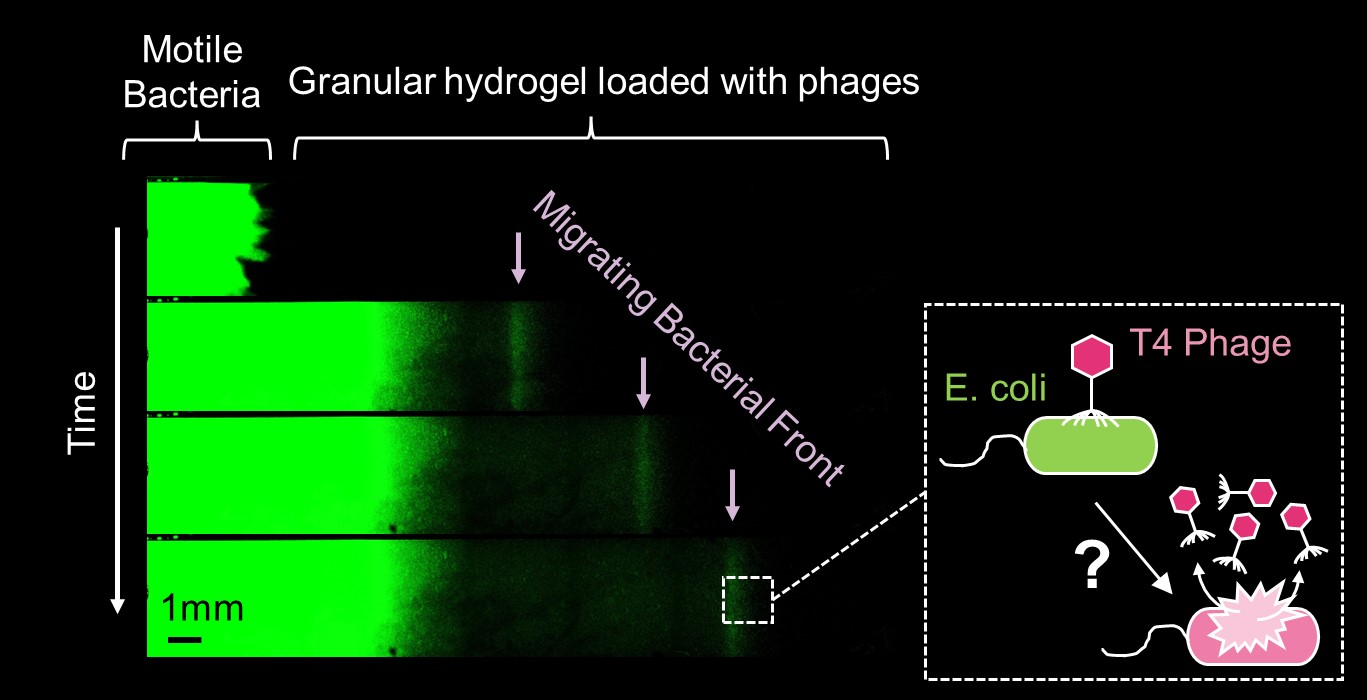2023 AIChE Annual Meeting
(645d) Dynamics of Phage-Bacteria Interactions in Crowded Environments
Here, we address this gap in knowledge using direct visualization of phage-bacteria interactions in transparent crowded matrices composed of packed hydrogel microparticles (i.e., âgranular hydrogelsâ). Specifically, we use confocal microscopy to visualize the real-time dynamics of motile E. coli encountering lytic T4 phages as a function of the initial spatial distribution of the bacteria and phages, the initial phage and bacterial concentrations, and the degree of confinement imposed by the crowded hydrogel matrix (i.e., the amount of space available to move in the surrounding 3D environment). Ultimately, by directly visualizing these interactions in crowded spaces more akin to natural habitats, our work will provide new quantitative insights to inform the design of phage-based engineering solutions across disciplines.
